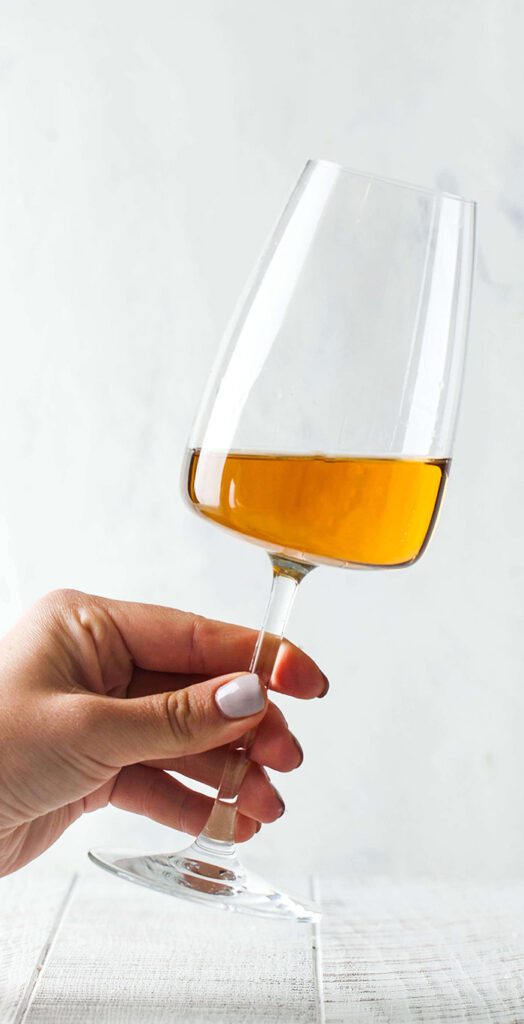Enjoying wine is largely a matter of taste, which can be subjective. So, when a bottle doesn’t seem quite right, is it you, or the wine that’s off?

Remove Yourself.
First, remove yourself from the equation. Most of us have strong opinions when it comes to the palate, especially regarding what we don’t like. And while you may dislike something, that doesn’t necessarily mean it’s bad. Chances are you’re sharing that bottle with other people, so see what they think.
If you’re sure it’s nothing personal, the simple answer is to trust your instincts. Remember, we use our innate senses on a daily basis, and generally, “the nose knows,” when something is off (our noses can detect up to 1 trillion distinct scents). Whether shopping at the store, preparing a meal at home, or cleaning out the refrigerator we’re constantly, actively assessing and reassessing, to make educated guesses about what’s fit or not, for consumption.
Knowing how to tell if a wine has gone bad is not much different. Trust your intuition. If your gut is telling you something is wrong, here are a few things to look for.
Most Common Reasons Why Wine Goes Bad:

Cork Taint, or “Corked” Wine
Caused by a chemical compound called TCA that is found in cork, it produces an odor and taste described as moldy basement, wet cardboard, and even wet dog fur. Cork taint affects all types and styles of wines and once present, the damage cannot be undone.
Oxidation
Overexposure to oxygen, often from a faulty cork or cap. Oxidized wines look burnt: white wine appears deep yellow or orange, and red wine turns brown or even rusty in color. The wine will taste burnt or caramelized. It should be noted that oxidation is a natural part of the aging process and most older wines will have some level of it. If your wine is changing color, it may be oxidized.
Sulfur
Sulfur is used as a preservative in the winemaking process, but sometimes can be overdone. White and red wine with excess sulfur will smell like rotten eggs. The good news is that with some aeration or decanting, sulfur in wine may dissipate and it will be drinkable.
Microbial Taint
There are hundreds of microbes in wine. Brettanomyces is a yeast that makes both white and red wines smell “sweaty” or funky. Lactobacillus gives wine a buttery flavor, but in excess causes a moldy nose and taste. And Acetobacter is the bacteria that turns wine into vinegar. In moderation, microbes in wine are tolerable, even, desirable, but if they’ve gotten out of hand it will be pretty obvious.
Cooked wine
Exposure to heat can literally cook a wine. It’s often the result of shipping or storing it in hot containers or delivery trucks during the summer months. White or red wines that taste overly concentrated like a syrupy, sweet reduction, or even balsamic vinegar were likely cooked by heat damage.
Stuck Ferment
If your wine tastes more like old soda or kombucha, it’s probably the result of a stuck fermentation. When a wine is not stabilized and filtered properly, it can start to re-ferment in the bottle. The secondary fermentation gives off CO2 bubbles making the wine fizzy and sour with a strong yeast odor.
Don’t Overthink It.
Finding any of these flaws in a wine is reason enough to stop drinking it. And if you’re in a restaurant and deliberating whether to reject a bottle, it’s not uncommon to ask the Sommelier or server to help you taste. If they concede the wine is bad, it’s standard practice to replace it with no questions asked.
Lastly, if you prefer to not overthink it, here’s an easy rule-of-thumb to follow: A good wine should be simply pleasing to drink. And it should get better with each sip. If by the second, third or fourth taste, the wine is still raising eyebrows, take it as a sign.
Life’s too short to drink bad wine, there will always be another bottle.


